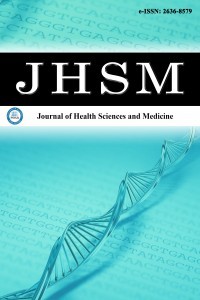1.
Doraiswamy PM, Potts JM, Axelson DA, et al. MR assessmentof pituitary gland morphology in healthy volunteers: age- andgender-related differences, AJNR Am J Neuroradiol 1992; 13:1295-9.
2.
Tsunoda A, Okuda O, Sato K. MR height of the pituitary gland asa function of age and sex: especially physiological hypertrophy inadolescence and in climacterium, AJNR Am J Neuroradiol 1997;18: 551-4.
3.
Wiener SN, Rzeszotarski MS, Droege RT, Pearlstein AE. M.Shafron, measurement of pituitary gland height with MR imaging.AJNR Am J Neuroradiol 1985; 6: 717-22.
4.
Suzuki M, Takashima T, Kadoya M, et al. Height of normalpituitary gland on MR imaging: age and sex differentiation, JComput Assist Tomogr 1990; 14: 36-9.
5.
Denk CC, Onderoglu S, Ilgi S, Gurcan F. Height of normalpituitary gland on MRI: differences between age groups and sexes,Okajimas Folia Anat Jpn 1999; 76: 81-7.
6.
Ibinaiye PO, Olarinoye-Akorede S, Kajogbola O, Bakari AG.Magnetic resonance imaging determination of normal pituitarygland dimensions in Zaria, Northwest Nigerian population, J ClinImaging Sci 2015; 5: 29.
7.
Singh AKC, Kandasamy D, Garg A, Jyotsna VP, Khadgawat R.Study of Pituitary morphometry using MRI in Indian subjects.Indian J Endocrinol Metab 2018; 22: 605-9.
8.
Elster AD, Chen MY, Williams DW 3rd, Key LL. Pituitarygland: MR imaging of physiologic hypertrophy in adolescence,Radiology 1990; 174: 681-5.
9.
Kato K, Saeki N, Yamaura A. Morphological changes on MRimaging of the normal pituitary gland related to age and sex: mainemphasis on pubescent females, J Clin Neurosci 2002; 9: 53-6.
10.
Tsunoda A, Okuda O, Sato K. MR height of the pituitary gland asa function of age and sex: Especially physiological hypertrophy inadolescence and in climacterium. AJNR Am J Neuroradiol 1997;18: 551-4
11.
Sahni D, Jit I, Harjeet, Neelam, Bhansali A. Weight and dimensionsof the pituitary in northwestern Indians. Pituitary 2006; 9(1): 19-26.
12.
Ibinaiye PO, Olarinoye-Akorede S, Kajogbola O, Bakari AG.Magnetic Resonance Imaging Determination of Normal PituitaryGland Dimensions in Zaria, Northwest Nigerian Population. JClin Imaging Sci 2015; 5: 29.
13.
Doraiswamy PM, Potts JM, Axelson DA, et al MR assessmentof pituitary gland morphology in healthy volunteers: Age- andgender-related differences AJNR Am J Neurodiol. 1992; 13: 1295-9.
14.
Dietrich RB, Lis LE, Greensite FS, Pitt D. Normal MR appearanceof the pituitary gland in the first 2 years of life Am J Neuroradiol1995; 16: 1413-9.
15.
Bughio S, Ali M, Mughal AM. Estimation of pituitary glandvolume by magnetic resonance imaging and its correlation withsex and age. Pakistan J Radiol 2017; 27: 304-8.
16.
Suzuki M, Takashima T, Kadoya M, et al. Height of normalpituitary gland on MR imaging: age and sex differentiation. JComput Assist Tomogr 1990; 14: 36-9.
17.
Ikram MF, Sajjad Z, Shokh IS, Omair A. Pituitary height onmagnetic resonance imaging observation of age and sex relatedchanges. J Pak Med Assoc 2008; 58: 261-5.
18.
Berntsen EM, Haukedal MD, Håberg AK. Normative data forpituitary size and volume in the general population between 50and 66 years. Pituitary 2021; 24: 737-45.
19.
Sari S, Sari E, Akgun V, et al. Measures of pituitary gland and stalk:from neonate to adolescence. Journal of Pediatric Endocrinologyand Metabolism, 2014; 27: 1071-6.
20.
Polat SÖ, Öksüzler FY, Öksüzler M, Uygur AG, Yücel AH.The determination of the pituitary gland, optic chiasm, andintercavernous distance measurements in healthy subjectsaccording to age and gender. Folia Morphol 2020; 79: 28-35.

